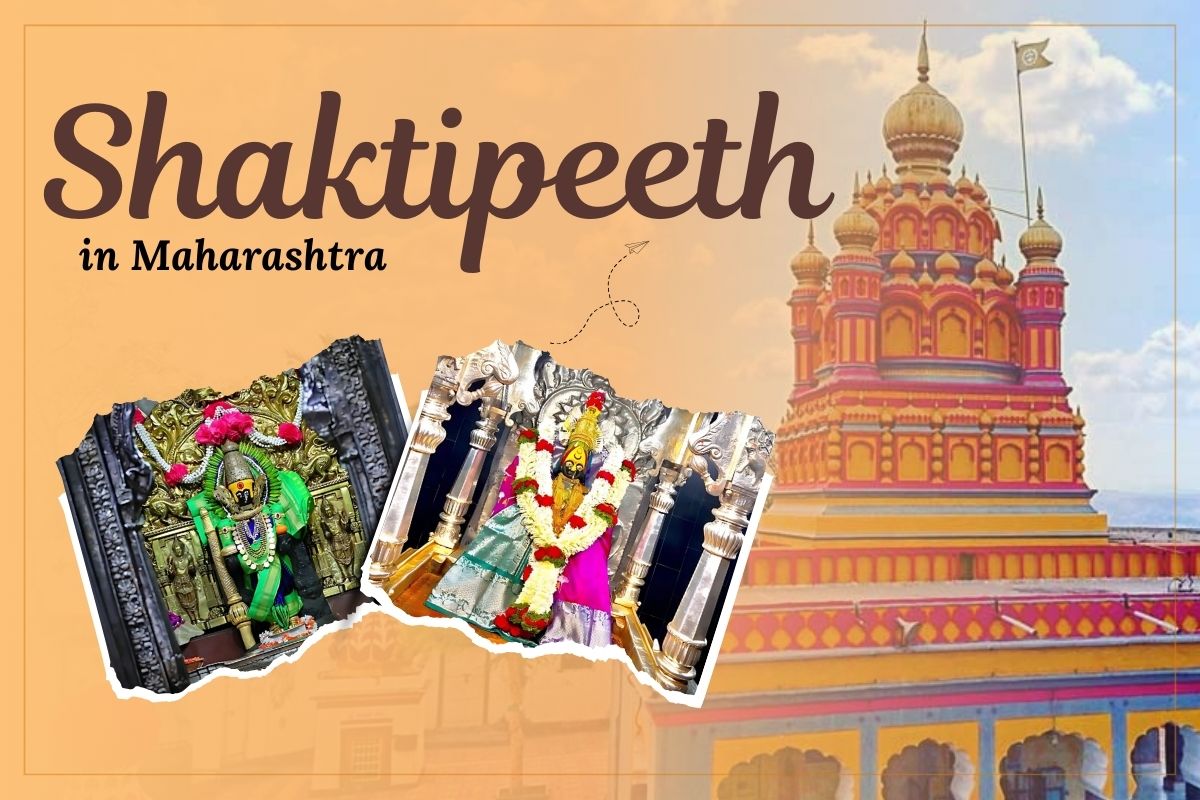


Maharashtra, a state with a rich history, cultural heritage, and spiritual significance, has numerous revered temples and pilgrimage sites. Among the most important and revered are Shaktipeeths — strands that emanate from places dedicated to Shakti, the goddess of divine feminine power. These sites are highly sacred in Hinduism, believed to be earthbound places where sheaths of the goddess Sati’s body fell as Lord Shiva carried her body across the cosmos, in a tempest of grief. Thus, in addition to being places of worship, the Shaktipeeths are also considered powerful spiritual centers, where the divine feminine energy is believed to have manifested. In Maharashtra though, there are a few of these, which draw thousands of devotees every year. Shaktism is a religious sect that identifies the Goddess as the highest cosmic power. Shaktipeeth in Maharashtra: The Significance & The Story behind Why These are Divine Places of energy for devotees and any believer to seek Shakti.
Table of Contents
ToggleLet me tell you the real story related to Shaktipeeths — (you know it or not but the concept of Shaktipeeths is based on the history of Sati (Goddess Durga) in Hindu mythology). In ancient times King Daksha insulted Lord Shiva for which he left his kingdom and went away. When Shiva heard of Sati’s death, the Tandava with her dead body in great grief. The gods intervened and Lord Vishnu, to pacify Shiva’s anger, dismembered Sati’s body using his Sudarshan Chakra.
Sati is believed to have been dismembered into multiple bodies across the Indian subcontinent and those locations are referred to as Shaktipeeths. Devotees comes here and worship those forms, praying for health, wealth, knowledge, and spirituality. Places of Shaktipeeths, because of these potent energies, are pilgrimage sites for all those who follow the path of Shaktism or for those who yearn for the grace of the divine mother.
Mahur Shaktipeeth, located in the Hingoli district of Maharashtra is one of the prominent temples dedicated to Goddess Renuka (also known as Yellamma). According to legend, the temple is at the spot where Sati’s right arm dropped. Mahur is regarded as the most sacred pilgrimage track of the Marathwada track, attracting devotees from all over the world. The breathtaking temple campus setting among Gorakh hills at Mahur is an ideal place with heavenly ambience for a tranquil spirituality experience.

The devotees often come during the Navratri festival and on other Mujhura days as well. The temple is known for its spiritual atmosphere, where devotees gather to pray for blessings, protection, and grace of Goddess Renuka.
Another prominent Shaktipeeth in Maharashtra is Tuljapur, situated in Osmanabad district. This town has a famous temple known as the Tulja Bhavani Temple, which is dedicated to Goddess Tulja Bhavani — an incarnation of the goddess Durga. These Peacock Temples are ancient temples, which is considered to be one of the 51 Shaktipeeths where the right ear of Sati fell. Maharashtra’s Pilgrimage Destinations – Shirdi is one of the eminent pilgrimage sites in Maharashtra.

The deity is considered an angry incarnation of the divine feminine power. The temple of goddess Tulja Bhavani in Tuljapur is famous for its detailed carvings and devotional importance. Pilgrims come to this temple to seek the goddess’s blessings for strength, prosperity, and protection. The temple holds many festivals including dheewas, which draws many people to participate in the temple, making it one of the main attractions and the most recognized temple in the state during Navratri.
One of the most reputed temples of Goddess Lakshmi is in Kolhapur, southwestern Maharashtra — Mahalakshmi Temple. Though it is not mentioned among the Shaktipeeths in Maharashtra, it is still highly sacred and spiritually positioned like a Shaktipeeth in Maharashtra. According to the legend, the goddess’s feet touched this place when Lord Shiva took her severed body through the world.

Mahalakshmi Temple, Kolhapur (Maharashtra) – This temple is famous for its wonderful architecture and beautiful idol of goddess Lakshmi dressed in gold and precious jewels. As the Goddess Lakshmi is the goddess of wealth and prosperity, pilgrims visit or perform a pilgrimage to Kolhapur to pay their homage in seeking wealth and success and to stay healthy through overall well-being.

Maharashtra is home to a Shaktipeeth in Pune, a cultural hub in the state. Parvati temple, located in Pune on the famous Parvati hill, is one more place associated with the Shaktipeeth tradition. Locally, it’s believed that the goddess’s left foot fell here. Although it is less known than other Shaktipeeth in Maharashtra, devotees come to the hill for blessings and peace of mind.
Shaktipeeths are not just temples, but sacred sites where the goddess, or the divine feminine energy, is believed to be concentrated. Devotees worship Goddess Shakti in these temples to experience and connect with the cosmic energy that generates and perpetuates life and the universe. These sacred sites are believed to cleanse the mind and spirit and those intending to seek the goddess’s blessings are subjected to spiritual awakening, healing, and personal transformation.
The temples also offer a space of cultural and spiritual cohesion, where worshippers of all backgrounds can come together to honor the divine feminine. The Shaktipeeth in Maharashtra serves as community hubs where rituals, prayers, and festivals bring together the practitioners and devotees, reinforcing their relationship with the divine.
The Shaktipeeth in Maharashtra are religious sites that symbolize profound respect for the feminine divine and ancient Hindu worship practices. These religious sites, including Mahur, Tuljapur, Kolhapur, and more, provide a spiritual refuge for devotees who desire divine blessings and empowerment. By traveling to these centers of great power, individuals are reminded of the abiding presence of the goddess and the transformation wrought by devotion, so Shaktipeeths in Maharashtra are not merely sacred sites of worship, but deeply personal and spiritual ones.

